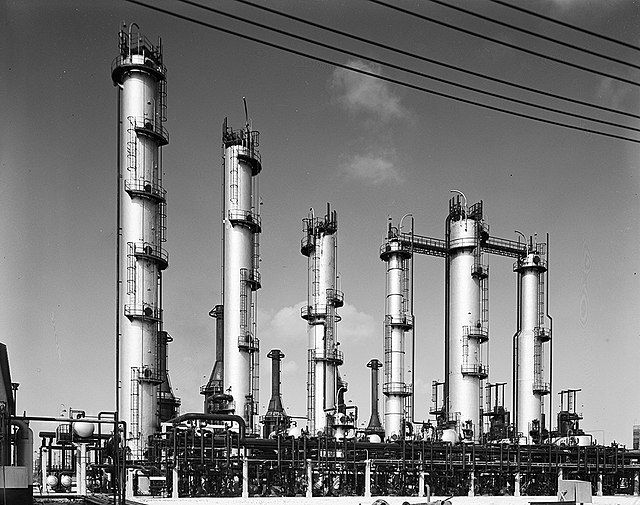The Environmental Effects of Israel's War in Gaza
- Isabel Kagoo

- Apr 13, 2024
- 4 min read
Since the October 7th attack, when Hamas-led militants killed over 1,200 Israelis and took approximately 250 people hostage, more than 30,000 Palestinians have been killed and millions more have been displaced by relentless Israeli airstrikes. The adverse effects of the increased militarism can evidently be seen on the degradation of Palestinians natural environment, especially in Gaza. Nada Majdalani, the director for EcoPeace Middle East, told Al Jazeera, “On the ground, this war has destroyed every aspect of Gaza’s environment.” In Gaza, the situation is catastrophic as the intense bombing campaign carried out by the Israeli military has exacerbated the effects of pollution and environmental degradation due to destroyed energy and water infrastructure. Moreover, Gaza’s future looks bleak as vital environmental resources have been poisoned, depleted, or destroyed, and may take generations to recover. After accepting an official request from the State of Palestine, The United Nations Environment Programme (UNEP) has launched an investigation into the environmental impact of the war in Gaza. According to a UNEP spokesperson, “All reports and data received suggest that the conflict has led to a major increase in pollution of land, soil, water - including the release of hazardous materials into the environment.”
The Environmental Effects in Gaza
Israel’s carpet bombing campaign in Gaza has destroyed major urban areas, rendering most of the territory uninhabitable. UNEP has classified debris and hazardous waste within the region as a major concern as the rubble from pulverized buildings most likely contains harmful substances like asbestos, heavy metals, fire contaminants, and hazardous chemicals, affecting the air and soil. Additionally, humanitarian groups such as Human Rights Watch have reported that the Israeli government has spread white phosphorus in Gaza, which could indicate serious air and soil pollution. White phosphorus is a deadly chemical weapon that is also damaging to the environment given its ability to easily contaminate critical water sources. In Gaza, this can be particularly deadly as the population already lacks access to clean water supplies. Additionally, agricultural land depends on water from these sources, therefore putting crops and livestock at risk. It is almost important to note that the buildup of phosphoric acid can deplete soil fertility and increase erosion, further impacting the agriculture sector in the region. Majdalani, the director for EcoPeace Middle East, cautioned that “As Gaza enters the rainy season, we expect the rain to fall as acid rain, contaminated with white phosphorus.” Gazans that collect rainwater for clean drinking would likely be at risk.
Furthermore, since the escalation of the conflict in October, Israel has targeted the environment by destroying essential infrastructure and limiting water, electricity, and fuel supplies to Gaza. It has been estimated that around 44 percent of gas, water and sanitation facilities in Gaza have been damaged by the bombing campaign. Electricity and fuel are essential for water pumps and desalination treatment. The combination of decaying bodies, solid waste, and contaminated water is deadly as hazardous substances can seep into the soil and potentially the aquifer, Gaza’s main source of water. Already, sewage water has flooded the streets of Gaza. Contaminated, standing water that mixes with rainwater will lead to transmissible, water-borne diseases such as cholera, typhoid, and hepatitis. More than 97 percent of Gaza's water is unsuitable for human consumption, and polluted water has been classified as a primary threat to the population of Gaza by the UNRWA.
Global Implications
It is also important to understand that environmental issues will likely spill across borders and directly affect Israel, as well as the rest of the world. Currently, the Norwegian Refugee Council estimates that at least 130,000 cubic meters of untreated sewage and wastewater from Palestine is being dumped daily onto land or into the Mediterranean Sea. As stated by a UNEP spokesperson, “Historical marine pollution incidents in Gaza have led to high concentrations of chlorophyll and suspended organic matter in coastal waters, and gastrointestinal parasites: this conflict is likely increasing these issues.”
Additionally, new research indicates that in the first two months of the war in Gaza, the carbon emissions generated were substantially greater than the annual carbon footprint of more than twenty of the world’s most climate-vulnerable countries, emphasizing the global ramifications of the ongoing war. Reports conducted by UK and US researchers suggest that over 281,000 tonnes of carbon emissions were released in the first 60 days of the war. Of this total sum, over 99 percent is attributed to Israel’s aerial bombardment and ground invasion of Gaza. Including carbon emissions from aircraft missions, tanks and fuel from other vehicles, as well as emissions generated by making and exploding the bombs, artillery and rockets, this analysis highlights the growing need for greater accountability of military greenhouse gas emissions.
Evidently, the continued carpet bombing campaign launched by the Israeli military has serious, far-reaching ramifications in terms of air pollution. As President of the Jordan Environment Union, Omar Shoshan recently said, “wars have a direct impact on climate change by increasing carbon emissions and destroying infrastructure. The Gaza Strip is a stark example in the face of a complex crisis from a humanitarian, environmental, health and climate perspective due to the repeated wars it has experienced in recent years.” Without a peace plan that centralizes safeguarding the environment in negotiations between Israel and Palestine, it is not only the Palestinians who will suffer, but also neighboring countries such as Israel, Lebanon, Jordan, and Egypt along with the rest of the world.
Image by Cpl. Reece Lodder via Wikimedia Commons



